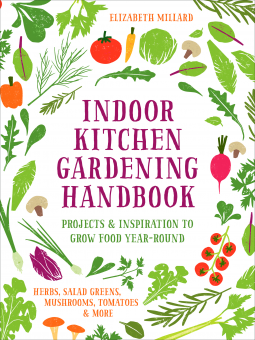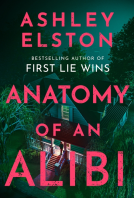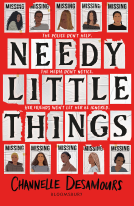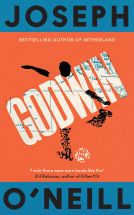
Indoor Kitchen Gardening Handbook
Projects & Inspiration to Grow Food Year-Round – Herbs, Salad Greens, Mushrooms, Tomatoes & More
by Elizabeth Millard
This title was previously available on NetGalley and is now archived.
Send NetGalley books directly to your Kindle or Kindle app
1
To read on a Kindle or Kindle app, please add kindle@netgalley.com as an approved email address to receive files in your Amazon account. Click here for step-by-step instructions.
2
Also find your Kindle email address within your Amazon account, and enter it here.
Pub Date 8 Sep 2020 | Archive Date 16 Sep 2020
Quarto Publishing Group – Cool Springs Press | Cool Springs Press
Talking about this book? Use #IndoorKitchenGardeningHandbook #NetGalley. More hashtag tips!
Description
It takes just a few dollars and a few days for you to start enjoying fresh, healthy produce grown indoors in your own home. Imagine serving a home-cooked meal highlighted with beet, arugula, and broccoli microgreens grown right in your kitchen, accompanied by sautéed winecap mushrooms grown in a box of sawdust in your basement.
Explore the expansive new world of growing and eating that can be discovered with the help of Indoor Kitchen Gardening Handbook. Within, author and Bossy Acres CSA co-owner Elizabeth Millard teaches you how to grow microgreens, sprouts, herbs, mushrooms, tomatoes, peppers, and more—all inside your own home, where you won’t have to worry about seasonal changes or weather conditions. You will find:
- An introduction to growing edibles indoors, from defining your goals and choosing a space, containers, soil, and grow lights to troubleshooting common problems like mold, pests, and disease.
- Guidance for growing crops perfectly suited to an indoor environment and that often have quick seed-to-harvest timeframes, such as microgreens, shoots, herbs, wheatgrass, sprouts, and mushrooms.
- Guidance for growing crops with shallow root systems that grow well indoors—such as radishes, carrots, lettuces, and tomatoes—that you will enjoy nurturing as they take time to develop into a rewarding bounty.
- Plenty of cheerleading to encourage your sense of adventure.
Filled with mouthwatering photography and nearly 200 pages of do-it-yourself in-home gardening information and projects, Indoor Kitchen Gardening Handbook is your gateway to this exciting new growing method—not just for garnishes or relishes, but wholesome, nutritious, organic edibles that will satisfy your appetite as much as your palate.
Available Editions
| EDITION | Other Format |
| ISBN | 9780760369029 |
| PRICE | US$21.99 (USD) |
| PAGES | 192 |
Average rating from 36 members
Featured Reviews
The perfect book for the absolute beginners! it gave me not only method, but idea and solutions to any eventual problem I may get if I intend to garden my own vegetables at home. Inspiring.
Il libri perfetto per i principianti assoluti! Non solo fornisce ogni tipo di idea e metodo, ma anche le soluzioni ad ogni eventuale problema che potrebbe proporsi, se decidessi di coltivarmi a casa la verdura e le spezie.
THANKS NETGALLEY FOR THE PREVIEW!
The Indoor Kitchen Gardening Handbook is a tutorial and culture guide to indoor food gardening year-round. Originally published in 2014, this second edition is due out 8th Sept 2020 from Quarto on their Cool Springs Press imprint, it's 192 pages and will be available in hardcover format.
I was surprised how much info I gleaned from this volume as well as how many usable bits of info were appropriate to my uses (despite having access to a large outdoor vegetable gardening area for the gardening season). The layout is accessible and logical. The introductory chapters cover some background, planning, finding and using space efficiently, getting started, and troubleshooting. The following chapters cover microgreens, shoots, sprouts, herbs, and mushrooms (!!??). The third section covers more 'traditional' vegetables such as peppers, tomatoes, radishes, carrots, etc fully grown to harvest indoors.
Full of specific advice for the challenging indoors culture of plants, this is an ideal book for people who either don't have access to more traditional growing platforms, or choose to extend the season indoors, or garden indoors year round (apartment dwellers and urban folks). A lot of the info will be useful to traditional gardeners as well who want to up their indoor gardening game. I don't have a first edition to compare with this edition, so I can't speak to the differences, changes, and/or upgrades, but this volume is really full of interesting and useful tips and tricks. Photography and instructions are clear and easy to follow and understand. Especially important info is highlighted in text boxes in the sidebars. The book includes a cross referenced index.
Four and a half stars. Well written and useful.
Disclosure: I received an ARC at no cost from the author/publisher for review purposes
This is a book I need! Like the author, I live up north with long, dark winters. Sadly, I do not have a green thumb, but I love growing herbs and eatable plants. I have tried to grow a few things indoors, but my success rate is low. I will try again with these tips this time around, which will in fact be in some weeks. I’m now planning and I will be ready to start soon. Let’s see how it goes!
I was especially happy reading about chilies and tomatoes, because having my own supply would be fantastic! Oh, how I hope to grow healthy basil and coriander. I believe I found many good tips in this book! Well-written, focusing on the important things, pointing out possible errors, and how to avoid them. Really appreciated the info about different varieties to grow indoors. This together with great photos makes this a delightful and useful read! 4,5 stars.
I received a free copy through NetGalley in exchange for a honest review.
 Reviewer 502855
Reviewer 502855
Great concept for a book-- bringing the outdoor garden indoors. The author does a nice job of spelling out what is realistic or not for an indoor garden. I was excited to see the breadth of topics covered by the author-- the inclusion of indoor mushrooms was a real treat. I'm excited to try these strategies in my own home.
 Johanna S, Reviewer
Johanna S, Reviewer
This is the first book I have ever read about actually making a garden inside your home. Not only does the author give you a step by step method but she helps you troubleshoot a bit as well. From micro greens, to herbs, to a normal vegetable fare. This book provides an in depth and skill level of a master gardener.
What did I like? There is enough pictures to be really detailed in a step by step method for the most part. I’ve seen people house indoor plants but never of the garden variety...unless you count chia pets. Not only is it fun to garden during growing season but now you can have fresh greens all year with this inside method. While I do not have a green thumb I will definitely be trying some of these.
Would I buy or recommend? I would love a copy. When my property is finally set up to move into it will be past the growing season. This method will let me try it out during winter season to see if I can grow anything. I love it!
I received a complimentary copy to read. I loved it. Five stars.
Loved this cookbook. I love to grow herbs and tomatoes and have attempted peppers indoors and this book gives lots of information on how to grow and gives solutions to problems as well.
 Media/Journalist 16509
Media/Journalist 16509
This is an updated 2020 version of the original book published in 2014. I have not read that one, but was impressed with this one. Many indoor gardening books give you mainly sprout instructions, or tell you how to regrow produce scraps. Millard walks you through the steps in growing a variety of veggies (including sprouts) inside and promises you don't need expensive grow lights to do it. She does recommend some lighting but it seems manageable and affordable.
I wouldn't get this book if you're looking forward to the mushroom instructions, as that bit is rather sparse and she admits she was not successful herself. She also admits it's very hard to keep tomatoes alive over the winter inside, though she says it can be done (my best efforts have been in actually taking cuttings and rooting them in water, then planting them and giving them loads of light). I appreciate that she's actually at least tried everything she writes about though, instead of the many books that just compile information from elsewhere and tell you it can be done. And she has clearly dedicated much time to actually doing this for quite a while, so you can learn from her successes and failures.
The photos seem to be a mix of stock images from Shutterstock and photos from her own kitchen garden. I never like the Shutterstock images in this sort of book as they're usually very artificial and set you up for disappointment (lush herbs in pristine white pots on windowsills that were obviously just purchased and transplanted for the shot, for instance), but it is nice having lovely color photos throughout, and I also enjoyed the ones that seem to be her actual set up.
All in all, this is a fun book that has me excited to try a few projects after I have to put my garden to bed this year.
I read a temporary digital ARC of this book for review.
As someone with virtually NO gardening experience, I'm probably an unlikely person to review something called the "Indoor Kitchen Gardening Handbook". Or perhaps that makes me a great person for it. Author Elizabeth Millard covers everything, from lighting to airflow (there's one I wouldn't have thought of!) to pests, making even this ultimate beginner feel like they could make a go of it. There are even suggestions for which seeds are your best bet for indoor growing. Her writing is like getting tips from a friend, if that friend happens to be very experienced with indoor growing! Okay, this winter...giving this a try!
 Educator 307709
Educator 307709
I've always wanted to grow herbs during the winter. I live in the midwest and haven't been successful - book gave great advice on growing mediums, light and air movement requirements to grow during the winter. I am excited to give it a try!
 Jo A, Reviewer
Jo A, Reviewer
Indoor Kitchen Gardening Handbook by Elizabeth Millard is full to the brim of all the information you would need to grow your own produce in your own home. The format is easy to follow and well thought out.
 Amary C, Reviewer
Amary C, Reviewer
This is a good place to start for someone considering a kitchen garden. The book discusses plants often used fresh and how to start planting and care for them. Suggestions are offered that will give a novice ideas for creating their own private sore of fresh herbs, inside as well as outside.
I requested and received a NetGalley ARC to peruse.
 Kate T, Reviewer
Kate T, Reviewer
Experimenting with indoor kitchen gardening helps get me through the long Michigan Upper Peninsula winters and this book gives some good tips. This is the first book I have read on the subject (and I have read several) that discusses the difference between sprouts and micro greens. I found the information interesting and helpful as I continue to try to grow.
 Danielle L, Reviewer
Danielle L, Reviewer
Thank you to the publisher and Netgalley for the opportunity to read and review this book. Unfortunately, I do not have the capability to read it in the protected pdf format.
 Reviewer 68310
Reviewer 68310
I really liked the variety of possible plants in this book. I had never considered growing beets indoors and thanks to this book, I fully understand how it's possible. I definitely disagree with the challenge level of common herbs but many of the tips are things I've picked up here and there over the years and here they are all in one resource. Millard goes over the whole process from seed to storage as well which is very useful.
Indoor Kitchen Gardening Handbook by Elizabeth Millard is a guide for how you can grow plants inside, including micro greens - seedling forms of the larger plant - to things like carrots and chard.
The book goes through things like sunlight, through flow of air, pests (mice adore seeds), and other advice.
If you're wanting to get in to growing plants for food, and are thinking about growing them inside, then this is a good book for you. It doesn't pull it's punches about all of the things that you need to consider, and also gives tips like what electric lights you can use.
Indoor Kitchen Gardening Handbook was published on 8th September 2020, and is available to buy from Amazon, Waterstones and your local independent bookshop .
You can follow Elizabeth Millard on Twitter and Instagram .
I was given this book in exchange for an unbiased review, and so my thanks to NetGalley and to Quatro Publishing .
If you love gardening and growing your own food, this book is perfect! While I grow some food outside, I have wanted to have more of an indoor garden. Indoor Kitchen Gardening Book by Elizabeth Millard covers everything you could possibly need to know for starting, growing, caring for, harvesting, storing, and everything else you can imagine.
There were several fruits and vegetables grown in this book that I did not know could do okay inside. This book definitely has given me a lot of food for thought and ideas to play around with. I do wonder what else could be grown indoors.
This book is a must buy if you love gardening and want a little greenery in your house.
I received an electronic advanced reader copy from Quarto Publishing Group- Cool Springs Press through NetGalley. All opinions are 100% my own.
 Librarian 431790
Librarian 431790
Highly informative, useful and full of information: I loved what I read and it will surely be useful.
Highly recommended.
Many thanks to the publisher and Netgalley for this ARC, all opinions are mine.
I liked this book about indoor gardening. There is a lot of useful information inside, and I can't wait to try out some of the suggestions. I would recommend it to all that are beginners in indoor gardening.
Many thanks to Netgalley and the publisher for the opportunity to read this! All opinions are my own.
Very informative and interesting. I loved the new things I was able to learn from this and plan to use my new knowledge to help my home fill up with beautiful things. I thank NetGalley and The publisher for my ARC copy in exchange for my honest opinion.
 Reviewer 711359
Reviewer 711359
I've become increasingly interested in growing my own food over the past couple of years, but I live in a flat with no garden access. When I've researched indoor gardening before, I was overwhelmed with the amount of information available, even though I already had some plant care knowledge. I wish my Google searches had led me to the Indoor Kitchen Garden Handbook sooner because it's a great comprehensive guide to growing produce indoors.
The handbook starts with the basics of plant care and how to plan your indoor garden. Then it's separated into chapters by plant types. Each chapter takes you through each step like how to germinate the seeds, plant the seeds, care for the plant as it grows and how to troubleshoot any possible problems. It's thorough without being overwhelming.
Despite all its merits, however, I do have a small issue with some misinformation I found in the book. At one point, the author states:
"Provide a little drainage by placing small rocks in the bottom of your planting vessel prior to adding the dirt."
Unfortunately this is an old adage that can be more harmful than helpful. Putting rocks at the bottom of your planting container raises the water table (the saturated layer of potting medium at the bottom of your container). This water table exists in any potted plant, no matter how good or bad a gardener you are, and it's an area too saturated for plant roots to stay healthy.
If you add rocks to the bottom of your container, it raises the water table of the soil, meaning you are limiting the amount of healthy potting medium your plant's roots have access to. The roots are either going to avoid the water table and grow too shallow to support the growth above the soil, or the roots will grow into the water table and develop root rot from staying too wet.
If your container is big enough that the roots can grow deeply without reaching the water table even with stones, then it's not a problem. But in most cases, considering the typical size of indoor plants, putting rocks at the bottom of your planting container is probably something to avoid.
 Cheryl R, Reviewer
Cheryl R, Reviewer
This book was perfect timing for me as I was finishing the harvest from my outdoor gardening, it was great to obtain guidance on how to do the same things inside. Many of the veggies and herbs that we love will now be enjoyed for longer periods of time. A good read for those like me who want more and also very timely as we are all spending more time at home it can also be a cost savings.
 Heather P, Reviewer
Heather P, Reviewer
I really enjoyed this book. It had lots of great advice/reminders for beginning and experienced gardeners. I like how it was sectioned into different topics. I especially enjoyed the section on micro greens. I would recommend this to gardeners of any experience level.
 jc C, Educator
jc C, Educator
A great book for anyone without a garden but wanting to have a go at growing their own food. It is full of inspiring ideas and projects, and the instructions are very clear. Definitely suitable for beginners and those who haven't gardened before. The book is lovely to dip into and would make a good gift book. Also ideal for trying the projects with children.
 Martha D, Reviewer
Martha D, Reviewer
The whole time I was growing up my family had a garden. So I've always considered fresh produce a normal part of life, making the transition to rental living difficult. I'd made a few attempts at container gardening but it never worked out very well. So I was super stoked to read this book, to figure out what I was doing wrong. With a guide to the best varieties, best containers, even best soil to use, I'm confident that what I've learned here will make it far more successful the next containers I plant.
Readers who liked this book also liked:
Rick Riordan; Mark Oshiro
Children's Fiction, LGBTQIA, Teens & YA


















